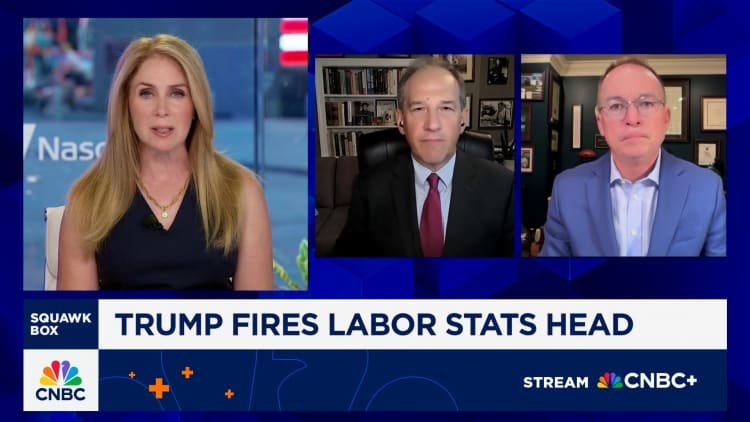Trump to Appoint New Leaders for Federal Reserve and Labor Statistics Bureau
Former President Donald Trump is set to announce new appointments for two significant positions within the federal government: one at the Federal Reserve and another at the Bureau of Labor Statistics (BLS). These vacancies emerged recently, with one resulting from the unexpected resignation of Fed Governor Adriana Kugler and the other due to Trump’s decision to dismiss BLS Commissioner Erika McEntarfer.
Key Changes at the Federal Reserve
Kugler, who served as a Fed governor, chose to step down ahead of her term’s expiration in January 2024. Her resignation will take effect on August 8, but she did not disclose any particular reasons for her early departure in her resignation letter to Trump. As a member of the Federal Open Market Committee, Kugler was instrumental in determining the U.S. central bank’s interest rates and developing banking regulations.
Trump has hinted that he is considering multiple candidates to fill Kugler’s position, stating, "I have a couple of people in mind." This change may allow Trump to influence the direction of the Federal Reserve, especially since he has voiced a desire for future nominees to be open to reducing interest rates.
Krishna Guha, head of global policy and central bank strategy at Evercore ISI, remarked that Kugler’s resignation gives Trump a strategic opportunity to reshape the Fed by potentially appointing a successor who aligns closely with his economic views.
Controversy Surrounding Labor Statistics Critique
The dismissal of McEntarfer came on the heels of a disappointing jobs report, which revealed that the U.S. economy added only 73,000 jobs in July. Furthermore, prior month’s job estimates were drastically revised downward by 258,000, prompting Trump to accuse McEntarfer of overseeing "the biggest miscalculations in over 50 years."
While it’s standard for the BLS to revise job statistics as more data becomes available, the frequency and magnitude of these revisions have raised concerns. Last year, for instance, the BLS amended its job count for the 12-month period preceding March 2024, reducing it by 818,000.
Kevin Hassett, the National Economic Council Director, emphasized the need for innovation in labor data collection and management. He stated, "It’s crucial that the data is transparent and reliable, enabling the market to rely on these statistics."
However, critics have voiced concerns that McEntarfer’s dismissal might politicize BLS data, which plays a vital role in guiding policy decisions and assessing economic health. Michael Feroli, chief U.S. economist at JPMorgan Chase, warned of the dangers associated with politicizing the data collection process, likening it to relying on an unreliable pilot in navigating economic challenges.
Currently, Deputy Commissioner William Wiatrowski has stepped in as the acting commissioner at the BLS as the search for McEntarfer’s permanent replacement continues.
Looking Ahead: Potential Candidates
As Trump prepares to announce his choices for both the Federal Reserve and the Bureau of Labor Statistics, potential candidates for the Fed spot include former Fed Governor Kevin Warsh and Treasury Secretary Scott Bessent. With these shifts impending, the focus will also be on how new appointments may influence U.S. monetary policy moving forward.
This reshuffling of key economic positions illustrates a broader strategy by Trump to reshape government agencies that dictate critical aspects of the economy. As both appointments unfold, the business community, policy analysts, and economists will be closely monitoring the implications of these changes on economic policies and practices across the nation.
